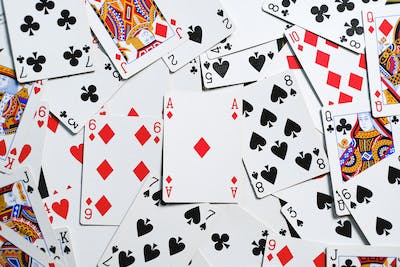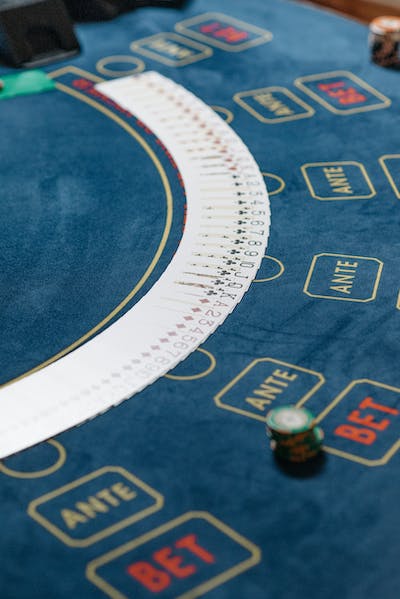
Playing aggressively is one of the most crucial elements to success in poker. Knowing when and how much to be aggressive can give you a huge edge over opponents, allowing you to increase your win rate drastically.
But this isn’t always easy – so how do you know when it’s time to switch from passive play to full-on aggression? In this blog post, we’ll look at signs that indicate it’s time for you to play more aggressively if you want to get ahead in your poker games. Whether you’re new or already a seasoned pro, these strategies will help sharpen your understanding of aggression and enhance your chances of victory.

You’re playing with too many weak players who are easy to exploit
If you’re playing poker but are often faced with too many passive opponents who continuously fold down their hands, it may be time to adjust your strategy and play more aggressively. It’s a sign that you can improve your game by exploiting their weak spots since they provide little opposition.
When faced with more skilled players, aggression can bring you success by setting the betting pace and fostering a good table image. Aggressive poker play also offers a welcome challenge for those who enjoy an adrenaline rush. It’s an intense, strategic pastime that continually tests skill levels against savvy opponents.
If you’re the type of player who functions best under pressure and wants more excitement from each hand played, becoming more aggressive at the poker table may be what exactly you need.
You’re losing in small pots
Many players become too passive and accept defeat in small pots, not realizing they could capitalize on their winnings if they played more aggressively. Aggressive playing means investing more money in the pot by raising your bets instead of just calling.
This signals strength to other players and can convince them to fold their hands when they would have stayed in the game had they been playing passively. Raising your bets can also help you earn bigger pots and win your game with your poker hands.
You’re playing too passively in pre-flop situations
Passivity can be a valuable tool in the right hands, but it must be combined judiciously with other plays to be effective. When pre-flop usually means folding, it could mean playing too cautiously and missing out on chances to increase your stack.
Over time these missed opportunities add up, limiting your chances for success when the tournament comes around. To fix this issue, try adding more bluffs and semi-bluffs on pre-flop raises to regain some lost stack lost due to passivity.

A good balance between aggressive and passive play is essential as it allows you to maximize rewards while minimizing risk – something all experienced players use as one of their main poker strategies.
Your opponents are calling you too much
As more experienced players know, when opponents call far too often, it’s likely an indication that you’re playing way too passively. Ramping up the aggression slightly can keep players from free-rolling their hands and taking the initiative instead.
Studies show that the most successful players recognize when to adjust their strategy in a given situation and use this to their advantage. Rather than staying static and allowing yourself to become predictable, choose moments where you can increase your aggression at the table for optimal success.
You’re not making enough 3-bets or 4-bets pre-flop
If you’re playing poker and you need to make more 3-bets or 4-bets pre-flop, this could signify that you need to play more aggressively. Playing more aggressively allows for more opportunities for bluffing, which can lead to increased pot size by the river.
Apart from the monetary benefits of playing this way, it also shows confidence in your hands and gives opponents something to think about before making decisions on the turn and river streets. Advanced players should always strive to understand their opponents’ behavior since increases in 3-betting and 4-betting activity imply strength or weakness.
Learning when and how often these maneuvers should occur is key to success at the poker table.

You’re not forcing your opponents off marginal hands often enough
Another reliable sign that you must play more aggressively is if your opponents frequently have marginal hands that they successfully see through to the showdown.
By increasing aggression, particularly pre-flop, you can put more pressure on your opponents and create a situation in which they are more likely to fold losses instead of backing into a winner after the flop.
It will also allow you to control multiple pots as the aggressor and generate value for your substantial holdings. So if you end up seeing too many showdowns where your opponent has weak holdings, then it might be time for a style adjustment and start aggressively taking back those pots.
You’re not playing enough “semi-bluffs”
Knowing when to employ strategic semi-bluffs in a game of poker is essential in playing competitively. If you’re finding that your opponents are only reacting to specific hands, this could signify that you need to take more risks in the game and play more aggressively.
Semi-bluffing involves betting on the chance that you will have a strong hand after the draw, even when you don’t have one yet. While somewhat risky, this strategy can pay off if executed well by generating folds from opponents and adding value to weaker hands.
Conclusion
By playing more aggressively, you’ll be able to take advantage of your opponent’s weaknesses and make them think twice before calling with marginal hands. It will put you in a better position to dominate the table and come out on top more often. So, it may be time to start playing more aggressively if you want to win more poker games.
 Skip to content
Skip to content





